Ground-breaking GNSS System——innovative integration of vision and surveying
Thank you for your interest in Hi-Target. We will contact you soon.
CLICK HERE TO DOWNLOAD THIS CASE STUDY
Earthwork measurement is an important step in the construction of the project, which is directly related to the cost estimation and scheme selection of the project. Therefore, the engineering unit needs to measure the earth volume before the construction of the project. It becomes a matter of concern for engineering units to calculate the earth volume quickly and accurately by means of measurement.
This project is the second phase of the Zhengzhou Road Construction Project, the road length and width are expected to be 2.583 km and 50 meters respectively, and the red line of land acquisition range along the road center line on both sides will be 100 meters outward. The road will beyond mere convenience for local communities in terms of transportation and daily life when the project is due for completion and goes into service.
On June 13, 2022, the project management was notified by the Local Committee Dept that the large sum of construction waste, which was generated during the construction, needs to be cleaned up to the specified location within two days. And the actual earth volume and the whole construction process will be recorded truthfully.
Most operators usually use UAV and RTK for earthwork survey projects. Professional drones require high qualifications and expertise techniques of the operators, however, many of the operating units are lacking professional pilots. And the RTKs for point acquisition in the project, require measuring each point manually which not only creates heavy workloads and is time-consuming, but also makes missing and over-measuring points of high possibilities. In addition, it is difficult and dangerous to measure the uneven and unknown ground surface sometimes.
To apply the new technologies to the project, the project management dept opts to use Hi-Target vRTK in measuring the earth volume in conjunction with the existing Hi-Target V200 RTK.

1. Field collection
Team A was applying the V200 RTK to the survey work. According to GB/T 17160-1997 specification for digitising 1:500, 1:1000, and 1:2000 topographic maps, Team A carried out control point verification after the signal received by RTK from the CORS base station got fixed solution state. When the accuracy met the requirements, the detailed survey can be performed. During the operation, Team A collected and recorded the obvious points of the changing land objects. And to improve field operating efficiency, the data was collected in automatic measurement mode so as to reduce the time of centering point alignments.

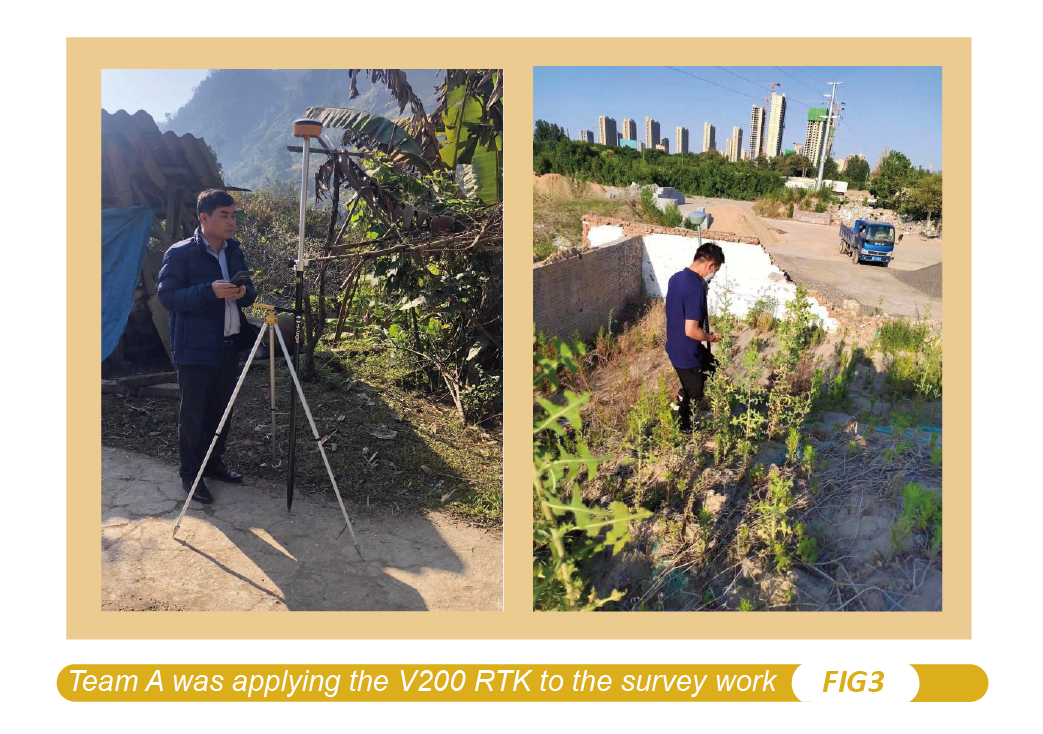
In contrast, Team B used the Hi-Target vRTK to carry out the data acquisition job at the opposite of Team A’s working area.to avoid interference. Differ from Team A, Team B took advantage of the image surveying technology of vRTK for data collection after control point verification was done and the accuracy met the requirements.
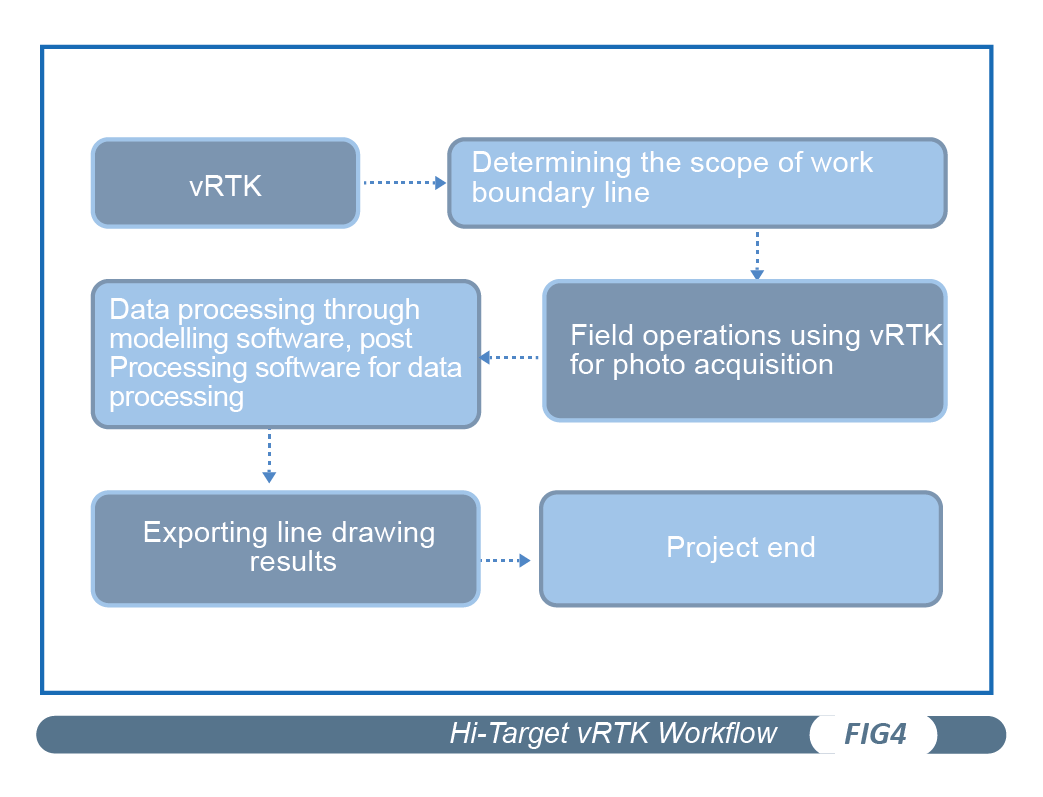
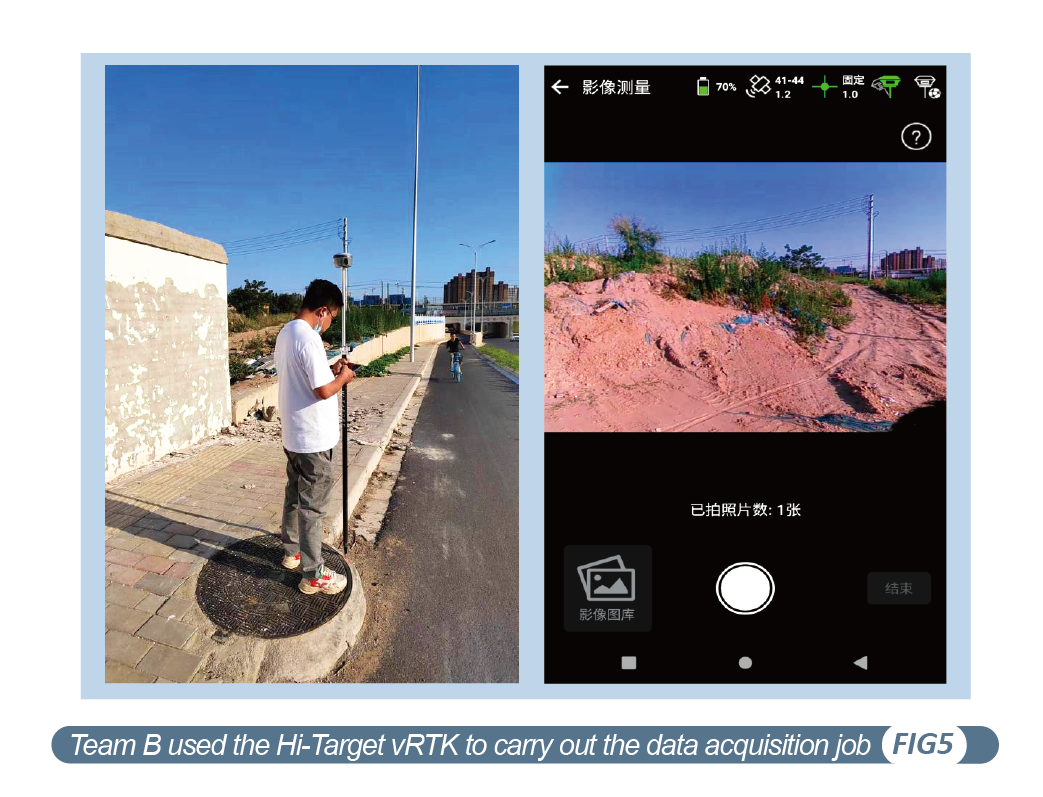
The real-time measurement results of V200 acquired by Team A can be recognized by the internal software directly after the data was converted into .dat format. By importing the survey area range, establishing DTM and generating triangle network or square grid, the earthwork data can be exported. Detailed operation shown in the figure below.

The image measurement of vRTK allowed Team B to process data in popular modeling software, and further match POS data with photos for aerial triangulation for exporting a 3D model. In view of the requirement on this project was level field elevation, so the earth volume can be calculated directly on the model, moreover, the secondary processing of data can realize richer data results output. Detailed operation in the following figure.
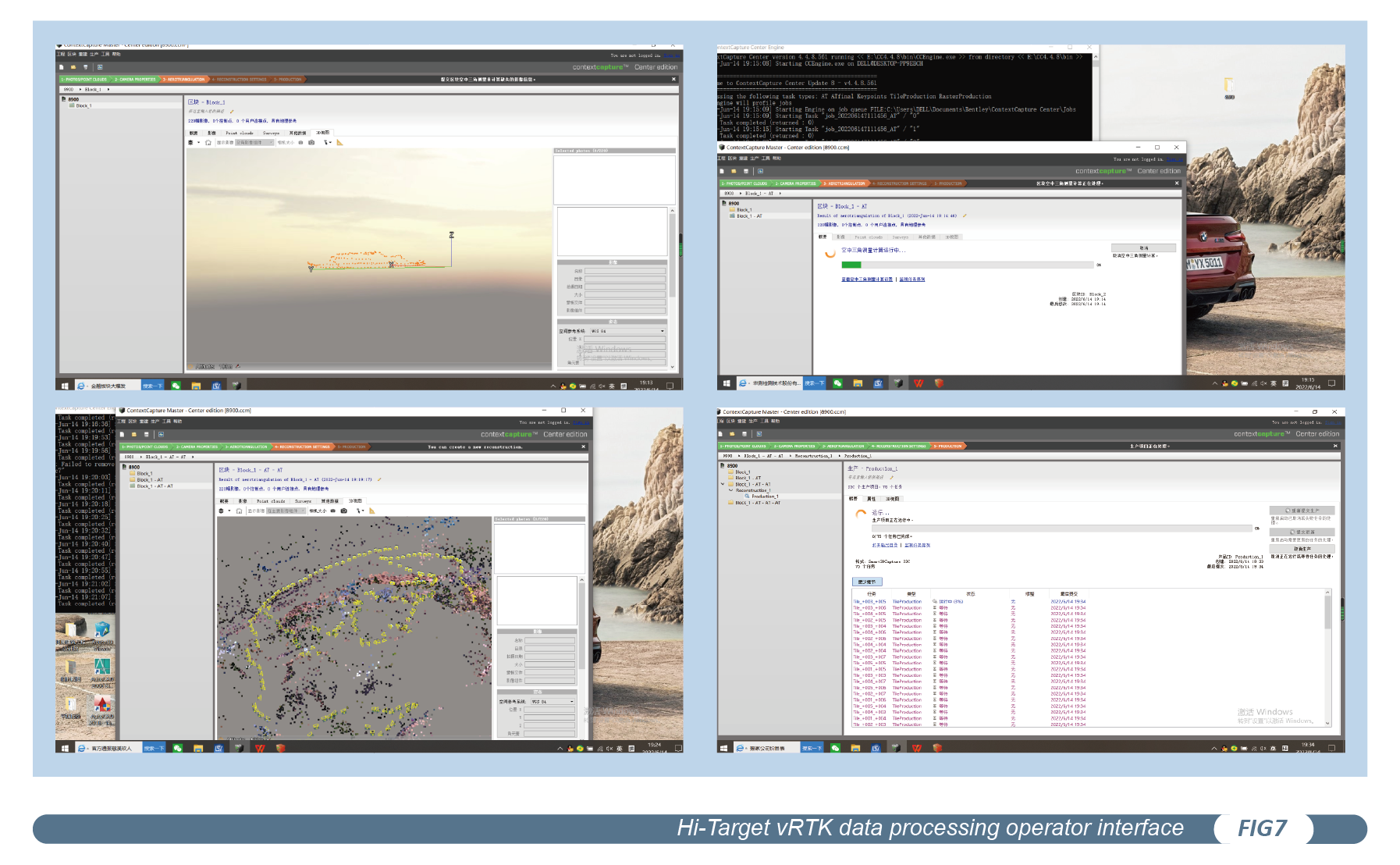
By comparing the two earthwork measurement results captured by Hi-Target vRTK and Hi-Target V200 RTK, the project department was surprised by the vRTK’s performance. “We have never thought that the RTK can measure points as a close-up photogrammetry, this is far more efficient than the previous earthwork measurement methods by all means.”
Besides the DLG (Digital Line Graphic), the results data are also included 3D model and DEM (Digital Elevation Model), making the construction of great efficiency.
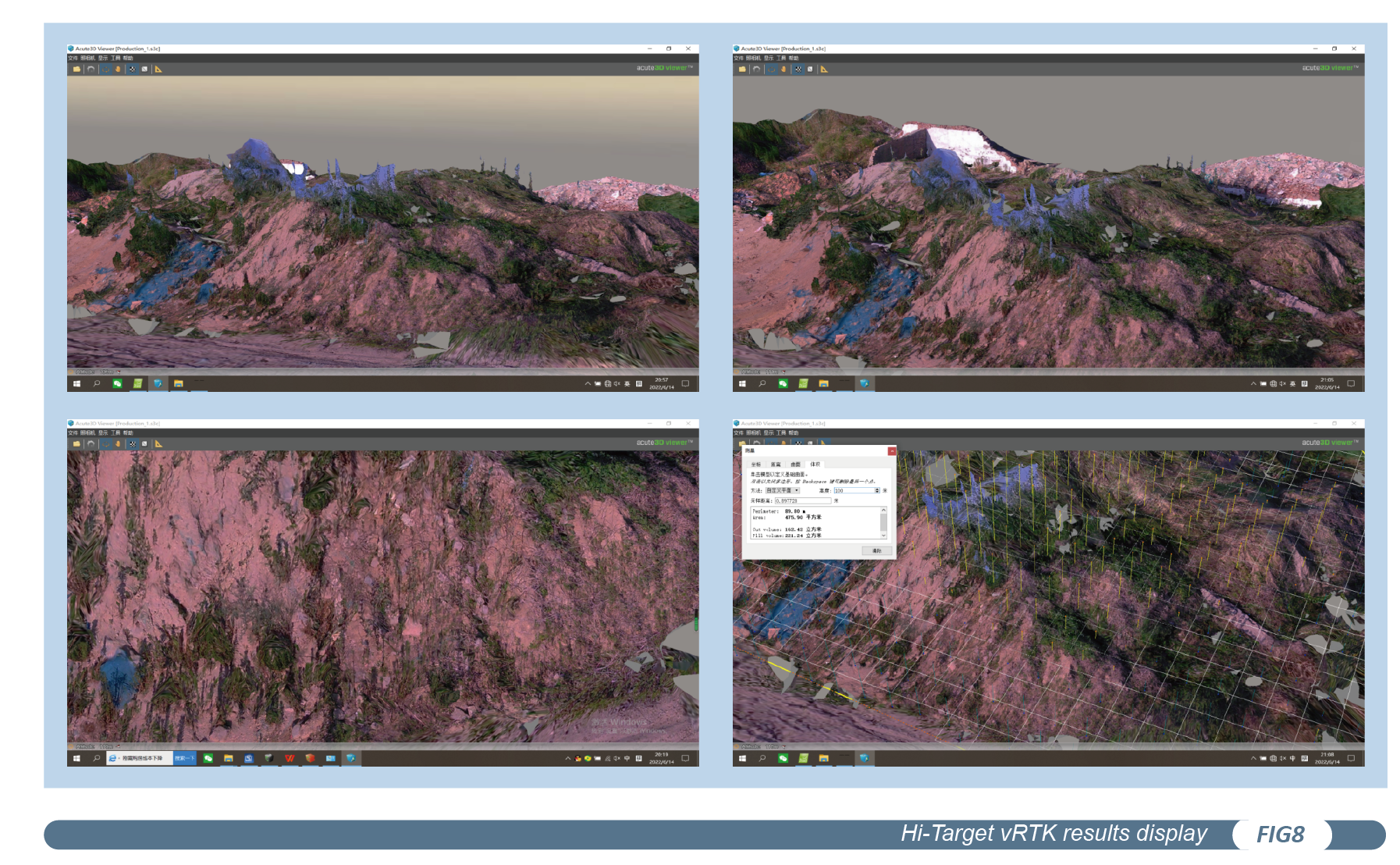
In this case of earthwork calculation, with the help of the high-precision RTK and HD cameras, the Hi-Target vRTK was able to perform image measurement which made great improvements in terms of field data collection, data processing, and data results compared to the traditional RTK measurement methods.
First, the field data collection was quickly. Relying on its distinguished image surveying technology, Hi-Target vRTK was able to capture information on either point from the image at a time, while the traditional RTK can only acquire information on a single point at one time. Therefore, when dealing with the same workload, the vRTK took less time to finish its job.
Second, the data processing step was effective. The bytes of every single photo are small with no specific requirement on the computer hardware though the internal data process of vRTK was complex. The time spent in interior data processing can obviously make up for the time spent on the field data acquisition.
Third, the data results were diversified. Not only the DLG file, the results of the 3D model, HD orthophoto, and DEM data can also be exported from the vRTK for the project management dept to monitor and decide the actual project progress, and further to support governmental decisions. While data export of the traditional RTK only supported DLG format, and the historical retention of evidence as well as storage issues can only be solved by data recovery.
Thank you for your interest in Hi-Target. We will contact you soon.